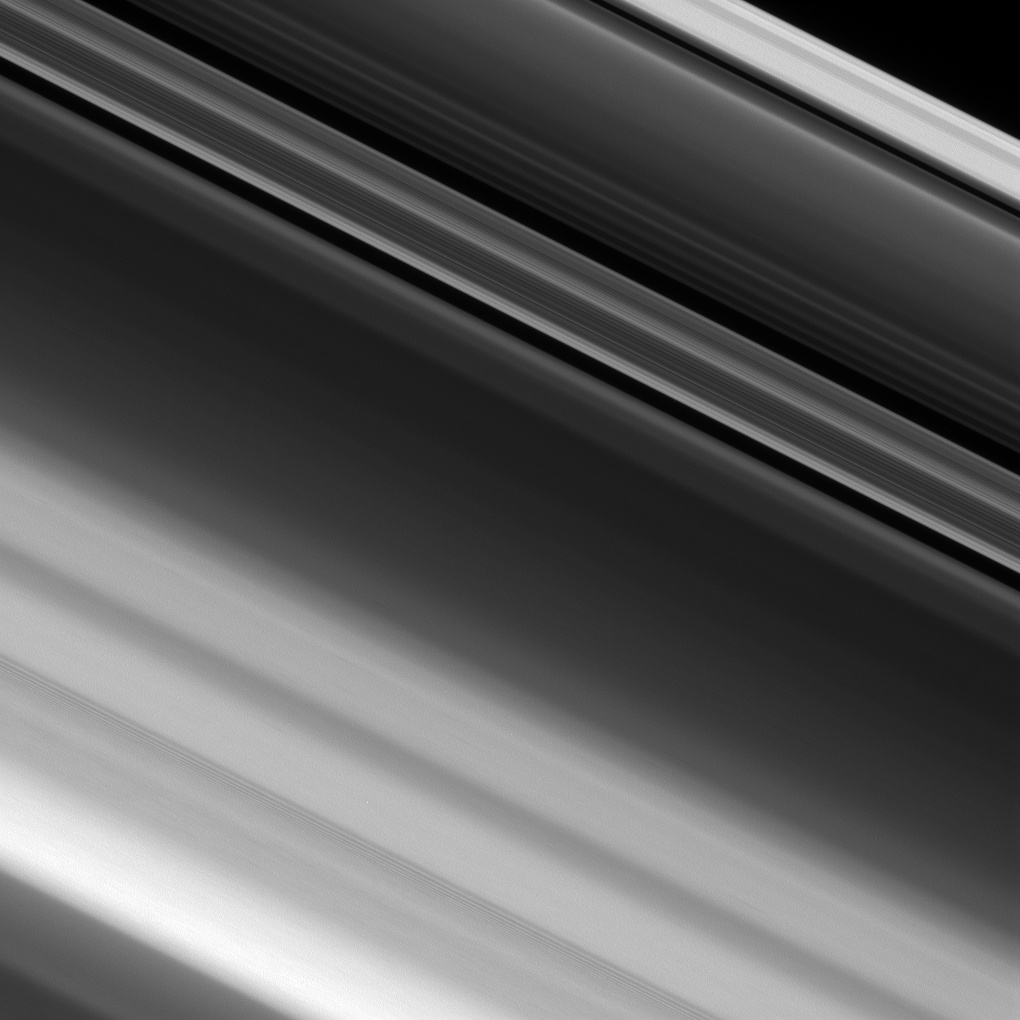A Resolution

| Credit | NASA/JPL-Caltech/Space Science Institute |
|---|---|
| PIA Number | PIA20526 |
| Language |
|
NASA's Cassini spacecraft zoomed in on a portion of Saturn's Cassini Division, between the A and B rings, revealing narrow, detailed structures that get even finer as the cameras' resolution increases. Even at this level of detail, it is still not fine enough to resolve the individual particles that make up the ring.
High-resolution images like this help scientists map the fine structure of Saturn's rings. Features less than a half a mile (0.7 kilometer) in size are resolvable here. But the particles in the A ring typically range in size from several meters across down to centimeters, making them still far too small to see individually here.
This view looks toward the sunlit side of the rings from about 79 degrees above the ring plane. The image was taken in visible light with the Cassini spacecraft narrow-angle camera on Jan. 9, 2017.
The view was obtained at a distance of approximately 70,000 miles (113,000 kilometers) from the region of the rings pictured here, and at a Sun-Saturn-spacecraft, or phase, angle of 52 degrees. Image scale is 2,300 feet (690 meters) per pixel.
The Cassini mission is a cooperative project of NASA, ESA (the European Space Agency) and the Italian Space Agency. The Jet Propulsion Laboratory, a division of the California Institute of Technology in Pasadena, manages the mission for NASA's Science Mission Directorate, Washington. The Cassini orbiter and its two onboard cameras were designed, developed and assembled at JPL. The imaging operations center is based at the Space Science Institute in Boulder, Colorado.
For more information about the Cassini-Huygens mission visit http://saturn.jpl.nasa.gov and http://www.nasa.gov/cassini. The Cassini imaging team homepage is at http://ciclops.org.
